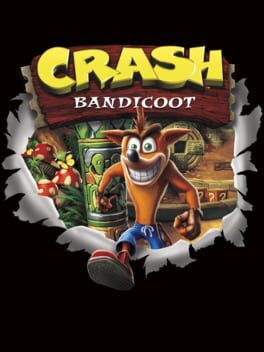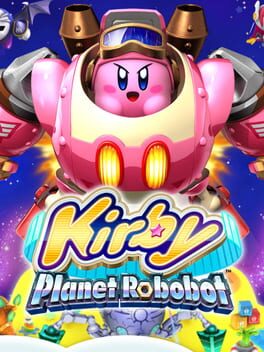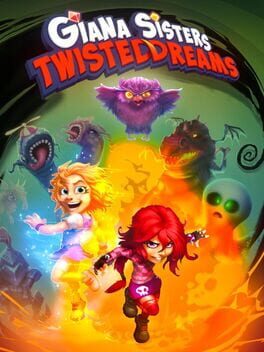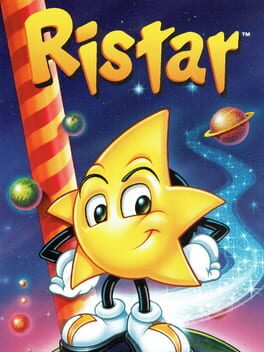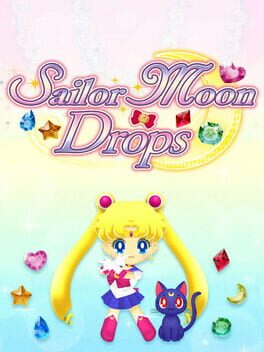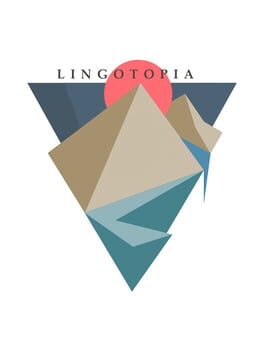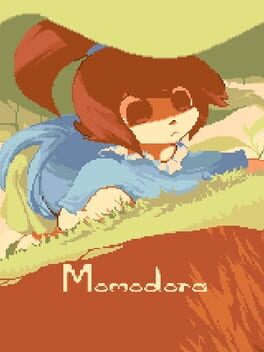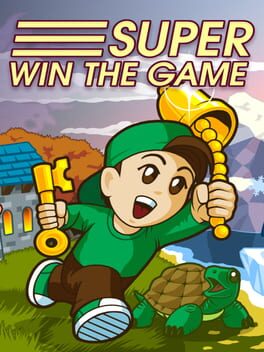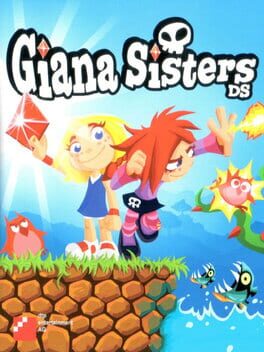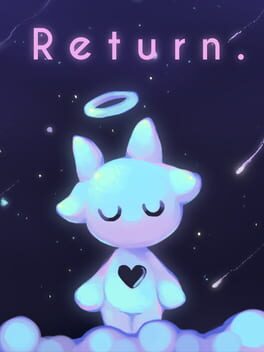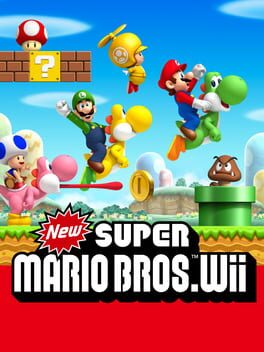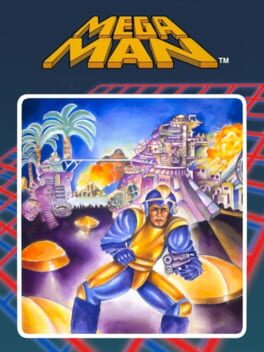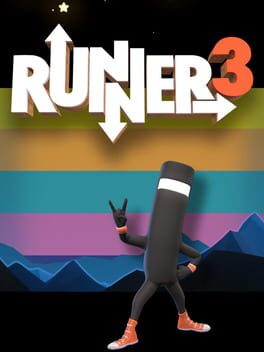mellorine
2017
Crash Bandicoot feels like a platformer designed in 1985, released in 1996, and re-released in 2017.
Its mechanics are simpler, much simpler than the two platforming kings of the time: Mario by this point had experimented with a variety of powerups and level progression systems, and Sonic had accomplished nuanced momentum and physics-based platforming, as well as telling a simple but effective story through and within its gameplay.
Crash Bandicoot doesn't have too much to offer, by contrast, particularly at first glance. Perhaps the one thing that it can truly claim for itself is the completionist's angle of getting all the gems, involving breaking all the boxes in every level (without dying, depending on the level or version you're playing on).
So far into the series, I think this is probably the standout mechanic of the entire franchise that distinguishes it from other platformers.
But like the object carrying system first introduced in Super Mario Bros. 3 (or 2, depending on your point of view about Doki Doki Panic), then later refined in Super Mario World and future games, I think there's more depth to the gems and boxes than it first appears, which redeems Crash Bandicoot for me, albeit moreso on a second playthrough when I can properly appreciate it.
Levels, especially those that require you to return after collecting colored gems, encourage you to play them multiple times to familiarize yourself with them and master everything they have to throw at you. This process began for me as trial and error, but slowly I transitioned into taking my time and figuring the level mechanics out (there are a surprising amount of timed moving platforms that follow fixed patterns in this game when you think about it), eventually getting to enough of a consistency that I found myself genuinely enjoying the game and having an easier time with it.
I think this is a general pattern that will re-emerge in more refined forms in the next two games in the series, but the N. Sane Trilogy also drives the point home for this instalment by adding Time Trial relics that test your mastery of the levels even further, expecting players to not only play without deaths, but also while going as fast as they can.
I haven't really played them, and I don't think I ever will, but it's a nice touch that emphasizes Crash Bandicoot's game design.
Crash Bandicoot is a game that feels like it was designed in 1985, but games in 1985 still had genuine nuance to them, like in Super Mario Bros. and, yes, the Lost Levels.
I think Crash has nuance. It's far from perfect, and it shows its age as a video game more than I think other games of its time do, but...
It's not Bubsy 3D, I can say that much.
Its mechanics are simpler, much simpler than the two platforming kings of the time: Mario by this point had experimented with a variety of powerups and level progression systems, and Sonic had accomplished nuanced momentum and physics-based platforming, as well as telling a simple but effective story through and within its gameplay.
Crash Bandicoot doesn't have too much to offer, by contrast, particularly at first glance. Perhaps the one thing that it can truly claim for itself is the completionist's angle of getting all the gems, involving breaking all the boxes in every level (without dying, depending on the level or version you're playing on).
So far into the series, I think this is probably the standout mechanic of the entire franchise that distinguishes it from other platformers.
But like the object carrying system first introduced in Super Mario Bros. 3 (or 2, depending on your point of view about Doki Doki Panic), then later refined in Super Mario World and future games, I think there's more depth to the gems and boxes than it first appears, which redeems Crash Bandicoot for me, albeit moreso on a second playthrough when I can properly appreciate it.
Levels, especially those that require you to return after collecting colored gems, encourage you to play them multiple times to familiarize yourself with them and master everything they have to throw at you. This process began for me as trial and error, but slowly I transitioned into taking my time and figuring the level mechanics out (there are a surprising amount of timed moving platforms that follow fixed patterns in this game when you think about it), eventually getting to enough of a consistency that I found myself genuinely enjoying the game and having an easier time with it.
I think this is a general pattern that will re-emerge in more refined forms in the next two games in the series, but the N. Sane Trilogy also drives the point home for this instalment by adding Time Trial relics that test your mastery of the levels even further, expecting players to not only play without deaths, but also while going as fast as they can.
I haven't really played them, and I don't think I ever will, but it's a nice touch that emphasizes Crash Bandicoot's game design.
Crash Bandicoot is a game that feels like it was designed in 1985, but games in 1985 still had genuine nuance to them, like in Super Mario Bros. and, yes, the Lost Levels.
I think Crash has nuance. It's far from perfect, and it shows its age as a video game more than I think other games of its time do, but...
It's not Bubsy 3D, I can say that much.
1991
It's a decent start to an embarrassing legacy. It's okay as a pick-up-and-play platformer, but the lack of a save feature and hit-and-miss continue system makes it hard to recommend in 2020. Super Mario All-Stars is a much easier sell - as are Sonic CD and Mania.
I guess you could play the mobile port? But that'd involve playing a mobile game.
And no, hacking the spin dash in doesn't really help this game.
I guess you could play the mobile port? But that'd involve playing a mobile game.
And no, hacking the spin dash in doesn't really help this game.
Playing this game is making me reconsider my faith in platformers as an actually good genre, but... I'd like to believe it's just this game, not the entire genre.
The game's main mechanic might be one of its biggest downfalls, actually. In concept, it reminds me a bit of Sonic CD's various time zones, but even compared to it, it falls completely flat on its face.
The first problem is that switching between Cute and Punk Giana doesn't really change the level design in any meaningful way. The only things that ever seem to happen are that certain moving platforms shift direction, some gems and platforms phase in or out, and some obstacles get enabled or disabled. It all feels a little superficial and under-utilized, if not flat out unnecessary.
The very specific aesthetic and musical approaches given to each character's versions of the levels also means that the game ends up looking and sounding extremely homogenous. The game lacks much of the variety that most platformers past the year 1990 seem to live and die on.
Another additional problem is that because Punk Giana is no longer a power-up, Giana dies in one hit without the extremely rare shield, which breaks the pace of the game significantly and forces developers to put checkpoints everywhere in an underwhelming attempt to compensate.
Levels are also simply too long and large, with lots of dead space. Good platformers like Mario, Sonic, Crash, Kirby and even modern Rayman simply don't do this (except for Sonic and Kirby, who sometimes use long stretches for visual impact), and it makes the game feel extremely amateur.
Hidden gems are either placed in overly cryptic, poorly hinted ways, or are too obviously hinted; in neither case are they actually ever interesting, although their sheer existence, abundance and the gem counter looming over the HUD makes ignoring them difficult.
As of this writing... Twisted Dreams is just kind of tragic. It lacks the polish that competent platformers usually have and desperately need to prove their mettle, and compared to what I remember of Giana Sisters DS, is a disappointing step down.
But hey, now we know why Black Forest ended up being the developers to the Bubsy game, right?
The game's main mechanic might be one of its biggest downfalls, actually. In concept, it reminds me a bit of Sonic CD's various time zones, but even compared to it, it falls completely flat on its face.
The first problem is that switching between Cute and Punk Giana doesn't really change the level design in any meaningful way. The only things that ever seem to happen are that certain moving platforms shift direction, some gems and platforms phase in or out, and some obstacles get enabled or disabled. It all feels a little superficial and under-utilized, if not flat out unnecessary.
The very specific aesthetic and musical approaches given to each character's versions of the levels also means that the game ends up looking and sounding extremely homogenous. The game lacks much of the variety that most platformers past the year 1990 seem to live and die on.
Another additional problem is that because Punk Giana is no longer a power-up, Giana dies in one hit without the extremely rare shield, which breaks the pace of the game significantly and forces developers to put checkpoints everywhere in an underwhelming attempt to compensate.
Levels are also simply too long and large, with lots of dead space. Good platformers like Mario, Sonic, Crash, Kirby and even modern Rayman simply don't do this (except for Sonic and Kirby, who sometimes use long stretches for visual impact), and it makes the game feel extremely amateur.
Hidden gems are either placed in overly cryptic, poorly hinted ways, or are too obviously hinted; in neither case are they actually ever interesting, although their sheer existence, abundance and the gem counter looming over the HUD makes ignoring them difficult.
As of this writing... Twisted Dreams is just kind of tragic. It lacks the polish that competent platformers usually have and desperately need to prove their mettle, and compared to what I remember of Giana Sisters DS, is a disappointing step down.
But hey, now we know why Black Forest ended up being the developers to the Bubsy game, right?
1995
I used to joke that Ristar was Sonic Team's best platformer on the Genesis, but not anymore.
I'm serious.
The slower paced of the game compared to Sonic makes the game feel more relaxed, something you can take in as a feel-good game like the Yoshi games, and by focusing less on momentum, also further simplifies the thinking you constantly have to make about movement.
Instead, Ristar excels by making the most of its unique grabbing mechanic. It's Miyamoto's adage of the stone that hits two birds at full display, surprisingly enough: with one mechanic Ristar can not only attack enemies from afar, but also latch onto handles - which allows for more interesting and challenging vertical traversal - and interact with objects in a very tactile way.
Indeed, Ristar feels everything with his hands; it's no surprise that the working title for the game was what it was.
Ristar handles vertically tiered level design and ascension - or really, its level design in general - in a very organic way that's rivalled by few in the entire 2D platforming genre. Yoshi's Island, Sonic Mania and Kirby Super Star are perhaps the few standout exceptions, which perhaps have the slight edge over Ristar at the end of the day by not having the intense difficulty curve that it has.
The game starts easy enough to grasp and understand, but the difficulty spikes hard, with bosses taking far more hits to defeat and the timing necessary to hit them becoming impossibly narrow. I cannot recommend taking your time to explore the first handful of Rounds enough; stocking up on lives and continues as early as possible will be a necessity in order to survive what the game eventually throws at you.
Prior to Sonic Mania, I probably would have said that this was SEGA's finest 2D platformer. On a personal level, it's not exactly my favorite, but its quality shines just as brightly; as do the fantastic soundtrack and graphics that give Sonic 3 & Knuckles a run for its money.
I can't say I liked the US version's changes, though - so I'd recommend the Japanese version, if only because Ristar isn't frowning all the time in it.
I'm serious.
The slower paced of the game compared to Sonic makes the game feel more relaxed, something you can take in as a feel-good game like the Yoshi games, and by focusing less on momentum, also further simplifies the thinking you constantly have to make about movement.
Instead, Ristar excels by making the most of its unique grabbing mechanic. It's Miyamoto's adage of the stone that hits two birds at full display, surprisingly enough: with one mechanic Ristar can not only attack enemies from afar, but also latch onto handles - which allows for more interesting and challenging vertical traversal - and interact with objects in a very tactile way.
Indeed, Ristar feels everything with his hands; it's no surprise that the working title for the game was what it was.
Ristar handles vertically tiered level design and ascension - or really, its level design in general - in a very organic way that's rivalled by few in the entire 2D platforming genre. Yoshi's Island, Sonic Mania and Kirby Super Star are perhaps the few standout exceptions, which perhaps have the slight edge over Ristar at the end of the day by not having the intense difficulty curve that it has.
The game starts easy enough to grasp and understand, but the difficulty spikes hard, with bosses taking far more hits to defeat and the timing necessary to hit them becoming impossibly narrow. I cannot recommend taking your time to explore the first handful of Rounds enough; stocking up on lives and continues as early as possible will be a necessity in order to survive what the game eventually throws at you.
Prior to Sonic Mania, I probably would have said that this was SEGA's finest 2D platformer. On a personal level, it's not exactly my favorite, but its quality shines just as brightly; as do the fantastic soundtrack and graphics that give Sonic 3 & Knuckles a run for its money.
I can't say I liked the US version's changes, though - so I'd recommend the Japanese version, if only because Ristar isn't frowning all the time in it.
2000
my get a life character's spouse refused to get out of the hot tub as their children was taken away from them in front of their very eyes. i haven't seen anyone talk about it, so i'm assuming it's a very rare glitch
get a life is a decent if hand-holdy introduction to sims, but it gets really monotonous fast. i'm shelving this because i'd like to try regular sims on the third game instead
get a life is a decent if hand-holdy introduction to sims, but it gets really monotonous fast. i'm shelving this because i'd like to try regular sims on the third game instead
2015
2018
2010
2014
2009
It won't change your world, but playing this after coming from Giana Sisters: Twisted Dreams, I can only say that this game is a masterpiece compared to it.
Giana Sisters DS is fairly conservatively built upon the foundations that the original game set up. Giana by herself has no abilities other than jumping (just like the first game, not even running!), and Punk Giana is the only powerup available - although unlike the original, she can't be upgraded any further.
This isn't to say that the game is a complete retread of the original. In fact, the original game's levels can all be found as an extra in this game, where they feel that much more bare-bones in comparison.
Levels have more verticality to them, and in each world's first nine levels are Red Gems that essentially act like Star Coins in the New Super Mario Bros. games.
In other words, levels are more often built to be thoroughly explored than in the original game.
But Twisted Dreams does all of this too, minus the Red Gems. What does DS do that Twisted Dreams gets so horribly wrong?
A lot.
Giana Sisters DS maintains the times and lives counter from the original game; the former keeps the length and scale of these levels in check, since the timer rarely goes above 300 seconds. There's considerably less empty space in the game's level design as a result, with blocks (both ? and Brick) filling up air decently well.
The fact that Giana can only jump and shoot fireballs also makes it so that there's a very limited moveset players are working with, which has been very much accounted for in the levels - unlike Twisted Dreams, where levels are often unforgivingly cheap just because players get a double jump.
Only Red Gems are mandatory for 100% completion, since normal blue gems only contribute to extra lives; this feels like a breath of fresh air compared to Twisted Dreams, which demands that players collect each and every gem for 100%.
Finally, the game just has more thoughtful design than its sequel in every way. Punk Giana has a ranged attack, allowing players to attack enemies from a distance; DS's smaller levels and easier difficulty also means that it doesn't need to put checkpoints everywhere like Twisted Dreams; Punk Giana is a proper powerup, meaning that players often have two hit points instead of one; Red Gems that have been picked up are lost after a death, unlike how Twisted Dreams lets Giana keep any gems collected after dying and respawning; the bubblegum powerup present in both games lets Giana survive with mercy invincibility in DS if she runs into an enemy or hazard, but kills Giana in Twisted Dreams alongside the bubble.
All that just comes to say that Giana Sisters DS is a competently designed and competently implemented platformer, which should be a given.
But considering this team would move on to make Twisted Dreams, even incorporating a Kickstarter campaign for it...
What went so, so wrong in the three years in between?
Giana Sisters DS is fairly conservatively built upon the foundations that the original game set up. Giana by herself has no abilities other than jumping (just like the first game, not even running!), and Punk Giana is the only powerup available - although unlike the original, she can't be upgraded any further.
This isn't to say that the game is a complete retread of the original. In fact, the original game's levels can all be found as an extra in this game, where they feel that much more bare-bones in comparison.
Levels have more verticality to them, and in each world's first nine levels are Red Gems that essentially act like Star Coins in the New Super Mario Bros. games.
In other words, levels are more often built to be thoroughly explored than in the original game.
But Twisted Dreams does all of this too, minus the Red Gems. What does DS do that Twisted Dreams gets so horribly wrong?
A lot.
Giana Sisters DS maintains the times and lives counter from the original game; the former keeps the length and scale of these levels in check, since the timer rarely goes above 300 seconds. There's considerably less empty space in the game's level design as a result, with blocks (both ? and Brick) filling up air decently well.
The fact that Giana can only jump and shoot fireballs also makes it so that there's a very limited moveset players are working with, which has been very much accounted for in the levels - unlike Twisted Dreams, where levels are often unforgivingly cheap just because players get a double jump.
Only Red Gems are mandatory for 100% completion, since normal blue gems only contribute to extra lives; this feels like a breath of fresh air compared to Twisted Dreams, which demands that players collect each and every gem for 100%.
Finally, the game just has more thoughtful design than its sequel in every way. Punk Giana has a ranged attack, allowing players to attack enemies from a distance; DS's smaller levels and easier difficulty also means that it doesn't need to put checkpoints everywhere like Twisted Dreams; Punk Giana is a proper powerup, meaning that players often have two hit points instead of one; Red Gems that have been picked up are lost after a death, unlike how Twisted Dreams lets Giana keep any gems collected after dying and respawning; the bubblegum powerup present in both games lets Giana survive with mercy invincibility in DS if she runs into an enemy or hazard, but kills Giana in Twisted Dreams alongside the bubble.
All that just comes to say that Giana Sisters DS is a competently designed and competently implemented platformer, which should be a given.
But considering this team would move on to make Twisted Dreams, even incorporating a Kickstarter campaign for it...
What went so, so wrong in the three years in between?
2018
It's honestly kind of impossible to rate a game like this amongst other games of much bigger scope and direction.
For what it is, Return is pretty. The graphics and sound all work to present an atmosphere that speaks for itself, and although it's just a short autoscrolling platformer at the end of the day, it has that slight touch of melancholy that adds a lot of charm to it.
I'll keep an eye on PsychoFlux. I like what the publisher (apparently a one-man operation!) is going for, and what I've seen from the games is interesting.
For what it is, Return is pretty. The graphics and sound all work to present an atmosphere that speaks for itself, and although it's just a short autoscrolling platformer at the end of the day, it has that slight touch of melancholy that adds a lot of charm to it.
I'll keep an eye on PsychoFlux. I like what the publisher (apparently a one-man operation!) is going for, and what I've seen from the games is interesting.
It's not New, not in 2020 - and it's certainly not Super Mario Bros. either.
If the original New Super Mario Bros. was a game that venerated the legacy preceding it, if sometimes to a fault, Wii was the game that threw out that legacy in order to tack on a multiplayer mode that ultimately feels ill-fitting.
I've read that the NSMB games from this point onwards were treated as learn-as-you-go training projects within Nintendo for new hires to get familiarized to Nintendo's internal development tools and game development in general - I don't doubt that.
But more importantly, I feel that Wii was a party game first and platformer second. Traditional Mario platforming level design takes a back seat for gimmicks that often keep the players together, almost as if playing a Mario Party minigame: rotating platforms that travel along a fixed path, rising lava and lifts, bone coasters, autoscrollers and more.
Between all that, and the Propeller Suit - its primary function being to compensate for the hectic multiplayer, being overtuned in single player - Wii ends up being a very unappealing platformer to play alone.
Maybe the people who loved it played it with friends.
It's still decent at absolute worst for platformer standards, either way, but not much better than that.
If the original New Super Mario Bros. was a game that venerated the legacy preceding it, if sometimes to a fault, Wii was the game that threw out that legacy in order to tack on a multiplayer mode that ultimately feels ill-fitting.
I've read that the NSMB games from this point onwards were treated as learn-as-you-go training projects within Nintendo for new hires to get familiarized to Nintendo's internal development tools and game development in general - I don't doubt that.
But more importantly, I feel that Wii was a party game first and platformer second. Traditional Mario platforming level design takes a back seat for gimmicks that often keep the players together, almost as if playing a Mario Party minigame: rotating platforms that travel along a fixed path, rising lava and lifts, bone coasters, autoscrollers and more.
Between all that, and the Propeller Suit - its primary function being to compensate for the hectic multiplayer, being overtuned in single player - Wii ends up being a very unappealing platformer to play alone.
Maybe the people who loved it played it with friends.
It's still decent at absolute worst for platformer standards, either way, but not much better than that.
1987
It's incredible to think about how much of a legacy Mega Man had with its ideas. Its open-ended level influenced later games like Shovel Knight, its concept of obtaining enemies' abilities was played around with by Kirby (handling it like in Mega Man would be a really cool idea for a Metroidvania, but that's not relevant here), and directly led to an entire franchise's worth of sequels, sub-series and spinoffs, with many platformers that people regard to be some of the best in the genre.
Mega Man does a surprisingly elegant job at executing these ideas, for the most part. The robot masters' stages are well-designed and fair, with each of them having distinct personalities to them in their visuals, music, and even level design!
Guts Man has players prove their worth in a challenging, but well-signposted moving platform section (or use the Magnet Beam, if that's your thing) and then gets players right into the boss arena very soon afterwards, for example; and Elec Man's level is heavily vertical, with an emphasis on climbing and tight staircase platforming.
The weapons are generally all decent, although Elec Man and Ice Man's weapons obsolete all the others' for the most part, in my opinion. Cut Man and Fire Man's weapons are circumstantial but have their uses - leaving the remaining two as being extremely situational.
But wouldn't it be fun for the game to open up after defeating all six robot masters? Wouldn't it be fun to be able to use all your weapons in interesting ways?
I think that was the intention behind the four Wily levels at the end of the game. In theory, I can respect it. The levels' length really establish it as a second half to the entire game, with the first half being for players to prepare and equip themselves in whatever order they choose before testing all of it in a fixed environment.
But I don't think it was well-executed in the slightest. The fair difficulty in the first half of the game just escalates into cheap territory: the Yellow Devil is infamous at this point, but so should be both boss rushes, as well as the copy Mega Man whom I swear is impossible to beat without just tackling him with the insta-shield provided by Fire Man's weapon.
And the game expects players to be able to beat all this with three lives - it probably expects players to retry it, fail, try, try again, before they master it and can plough through everything from muscle memory alone.
That's probably why they let players choose their robot master order in the first place: so that they can find a route that works personally for them, so that they can optimize the first half of the game so that they can get on to the "real game" as quickly as they can on every sitting.
Which suggests to me that the fair difficulty of the robot master stages was actually what they believed to be easy. That stings.
In a sense, Mega Man's innovations feel like a fluke, aside from the weapon mechanic.
It's a relief and a miracle that Mega Man 2 was allowed to be made, resolving some of the issues here (adding a password system, making the difficulty spikes less extreme). I'll have to see how future games handle this accident.
Mega Man does a surprisingly elegant job at executing these ideas, for the most part. The robot masters' stages are well-designed and fair, with each of them having distinct personalities to them in their visuals, music, and even level design!
Guts Man has players prove their worth in a challenging, but well-signposted moving platform section (or use the Magnet Beam, if that's your thing) and then gets players right into the boss arena very soon afterwards, for example; and Elec Man's level is heavily vertical, with an emphasis on climbing and tight staircase platforming.
The weapons are generally all decent, although Elec Man and Ice Man's weapons obsolete all the others' for the most part, in my opinion. Cut Man and Fire Man's weapons are circumstantial but have their uses - leaving the remaining two as being extremely situational.
But wouldn't it be fun for the game to open up after defeating all six robot masters? Wouldn't it be fun to be able to use all your weapons in interesting ways?
I think that was the intention behind the four Wily levels at the end of the game. In theory, I can respect it. The levels' length really establish it as a second half to the entire game, with the first half being for players to prepare and equip themselves in whatever order they choose before testing all of it in a fixed environment.
But I don't think it was well-executed in the slightest. The fair difficulty in the first half of the game just escalates into cheap territory: the Yellow Devil is infamous at this point, but so should be both boss rushes, as well as the copy Mega Man whom I swear is impossible to beat without just tackling him with the insta-shield provided by Fire Man's weapon.
And the game expects players to be able to beat all this with three lives - it probably expects players to retry it, fail, try, try again, before they master it and can plough through everything from muscle memory alone.
That's probably why they let players choose their robot master order in the first place: so that they can find a route that works personally for them, so that they can optimize the first half of the game so that they can get on to the "real game" as quickly as they can on every sitting.
Which suggests to me that the fair difficulty of the robot master stages was actually what they believed to be easy. That stings.
In a sense, Mega Man's innovations feel like a fluke, aside from the weapon mechanic.
It's a relief and a miracle that Mega Man 2 was allowed to be made, resolving some of the issues here (adding a password system, making the difficulty spikes less extreme). I'll have to see how future games handle this accident.
2018
